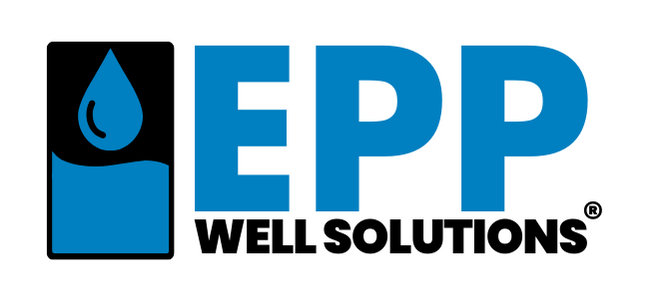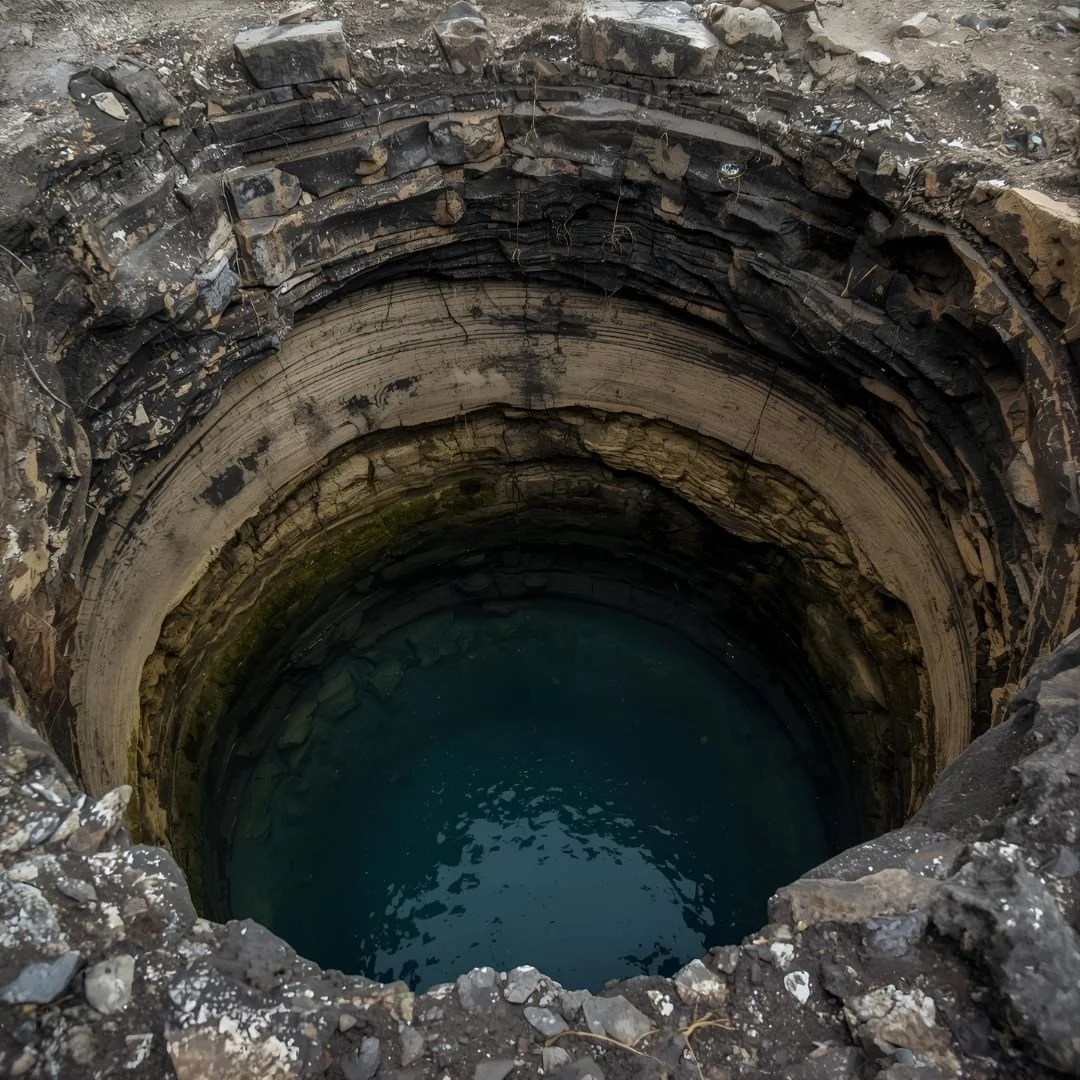Static Water Level: The Single Metric That Protects Your Well’s Life
Here at Epp Well Solutions, we recognize that few things are as vital to the rural homeowner’s quality of life as a reliable, uninterrupted water supply. We’ve heard the stories: the anxiety of running out of water halfway through a shower, the constant vigilance required for laundry day, and the fear that every sputtering faucet signals an impending, expensive crisis.
This daily stress often stems from a fundamental misunderstanding of the well asset itself. Homeowners typically focus on the output—the Gallons Per Minute (GPM) or the Pounds per Square Inch (PSI)—but the true health of a well is governed by an invisible, yet critical, metric: the Static Water Level.
The Static Water Level (SWL) is not just a number on a technical report; it is the cornerstone of your well’s life expectancy and the ultimate predictor of its long-term reliability. Without understanding the SWL, every time your pump turns on, you are running a potentially catastrophic risk of well failure. Our mission is to transform that anxiety into assurance, and that process begins with empowering you with knowledge of this single, most important diagnostic element. This comprehensive guide will demystify the Static Water Level, explain its relationship to dangerous drawdown and over-pumping, and show how advanced automation technology can actively manage this critical resource, ensuring your family’s peace of mind for decades to come.
Defining the Static Water Level (SWL)
In the simplest terms, the Static Water Level (SWL) is the depth from the ground surface down to the water table inside the well casing when the pump is not running and the water column has been allowed to fully recover and stabilize. It represents the resting water elevation within the aquifer that is accessible to the well.
For new wells, the SWL is established shortly after drilling and development are complete, often recorded on the official drilling log. This initial measurement serves as the baseline—the optimal, natural height of the water column in the casing. Think of the SWL as the “full” mark on a reservoir. It is a measurement taken when the well is entirely at rest, reflecting the natural recharge capacity of the surrounding underground geological formations, or aquifer.
The SWL is measured in feet from the ground surface and is a direct indicator of the pressure and volume of water available to the well pump before any withdrawal begins. If your SWL is 50 feet, it means the water surface sits 50 feet below the surface of the ground.
It is crucial to understand that the SWL is influenced by several factors:
Seasonal Variations: Rainfall and snowmelt directly impact the aquifer. During wet seasons, the SWL will typically rise due to increased recharge. Conversely, during periods of drought, the water table naturally drops, and the SWL will follow suit.
Geological Structure: The underlying geology—the permeability and porosity of the soil, sand, or bedrock—dictates how quickly the aquifer can replenish itself.
Neighboring Activity: Drawdown from nearby high-volume wells can temporarily or permanently depress the regional water table, affecting your well's static level.
Because the SWL is dynamic and not fixed, ongoing monitoring is essential to detect concerning trends before they become serious problems.
The Critical Difference: SWL vs. Pumping Water Level (PWL)
While the Static Water Level provides a measurement of the resting resource, the real story of well performance is told when the pump engages. This is where we introduce the second foundational metric: the Pumping Water Level (PWL).
The Pumping Water Level is the depth of the water surface in the well casing while the pump is actively operating and withdrawing water. The difference between the SWL and the PWL is defined as the drawdown.
Drawdown=Pumping Water Level–Static Water Level
Every time your well pump cycles, it creates a drawdown effect. This is natural and necessary to deliver water to your home. The rate and severity of the drawdown, however, are what determine the long-term health and stability of your well.
Healthy Drawdown: In a high-yielding well, the pump can operate for extended periods with minimal drawdown, meaning the PWL stays close to the SWL. The aquifer can quickly replenish the water as it is withdrawn.
Dangerous Drawdown (The Path to Over-Pumping): In a low-yield well, the rate of withdrawal (the pump’s capacity) is often much greater than the rate of recharge (the aquifer’s capacity). When the pump runs, the water level drops quickly, creating a severe and rapid drawdown.
If the pump continues to run in this state, the water level can drop dangerously low—below the pump intake, or even worse, below the well screen. This action is known as over-pumping.
Over-pumping is the single most frequent cause of premature well failure, leading to devastating consequences :
Pump Burnout: Running a submersible pump without adequate water flow causes it to overheat, leading to expensive motor failure and replacement costs.
Sediment Introduction: When the water level drops too low, the pump begins to pull air, sand, and sediment from the bottom of the well. This causes internal abrasion to the pump components and introduces abrasive materials into your home's water system.
Well Damage: Severe drawdown and the resulting introduction of sediment can damage the well screen, reducing the future yield and requiring costly, professional well rehabilitation (e.g., air-lift surging or acid soaks) to attempt to restore flow.
Therefore, managing the relationship between SWL, PWL, and drawdown is not merely a technical exercise; it is an act of preservation. The goal is to maximize the amount of water harvested while strictly preventing the drawdown from ever reaching a level that triggers over-pumping.
How Automation Protects the Static Water Level and Maximizes Yield: The Well Harvester Solution
The challenge inherent in protecting a low-yield well is reconciling the instantaneous water demands of a modern household (multiple showers, laundry, dishwashers) with the slow, deliberate recharge rate of the aquifer. Traditional systems often rely on basic pressure switches and simple water holding tank setups, but these systems are fundamentally "dumb"—they do not measure the PWL and therefore cannot prevent over-pumping.
This is precisely the gap we designed the Well Harvester system to fill.
We are the only manufacturer of this specific high-tech system, which utilizes sophisticated automation technology to intelligently manage water draw amounts as the static water level changes. The Well Harvester is not just a storage solution; it is an active steward of your well asset.
The system works by shifting the traditional priority of the pump cycle. Instead of running the pump until the household pressure is satisfied (which risks running the pump dry), the Well Harvester focuses entirely on the well's available resource.
Our patented system incorporates integrated sensors and smart controls to continuously monitor the water level within the well casing. When water is available—when the level is sufficiently high—the system pumps well water into a dedicated storage tank.
Crucially, the automation protocols are engineered to automatically adjust the draw times to the well's recharge capacity. The moment the water level drops below a safe, defined setpoint (the critical PWL threshold), the system instantly ceases pumping. This protection mechanism completely eliminates the risk of over-pumping and the devastating consequences that follow.
The system then waits for the well to regenerate back toward its static water level, ensuring the aquifer has adequate time to replenish the resource. This variable draw time and smart optimization feature accounts for fluctuations, such as seasonal drought or increased usage.
The result is a highly reliable, two-stage system: the well is protected from premature failure, and maximum water yield is harvested 24 hours a day, providing you with ample reserve. The water stored is then boosted to your home via a secondary pump at high pressure and output, guaranteeing strong, consistent flow to every fixture in your house, eliminating the anxiety of constant water management. This sophisticated automation is the difference between constant worry and lasting peace of mind.
Measuring, Monitoring, and Maintaining the SWL
While automation systems like the Well Harvester take over the daily management of the PWL and drawdown, understanding your baseline SWL remains a fundamental step in comprehensive well stewardship.
Measuring the Static Water Level requires precision and, in many cases, specialized equipment. We strongly recommend consulting with a licensed well contractor to obtain an accurate reading, as they possess the necessary tools and experience to access the well safely.
However, for documentation and monitoring purposes, we advise all homeowners to take the following steps to track and understand their well's history:
Consult Your Well Drilling Log The drilling log, often filed with your county or state geological survey, provides the initial, official Static Water Level measurement taken when the well was constructed. This establishes the historical baseline.
Log Monthly Water Yields and Usage Maintain a simple log detailing how long your pump runs and the estimated volume of water used monthly. Cross-reference this usage data with regional rain data. Any long-term drop in the SWL—or a noticeable increase in required pump runtime to achieve the same result—must be noted as a potential issue.
Perform Regular Visual Checks While you cannot see the SWL with the naked eye, you can check for common symptoms of dangerous drawdown, such as sputtering faucets (air being pulled into the system), gurgling noises in the pipes, or the pump running much longer than usual to fill the pressure tank. These are often symptomatic of a dangerously low PWL.
The SWL is not a static number—it is a vital sign of your aquifer’s health. If you notice a persistent drop in the SWL that cannot be explained by seasonal drought, it may signal an underlying problem, such as siltation, casing collapse, or biofouling, which requires immediate professional diagnosis.
Final Vigilance and The Path to Reliability
The long-term reliability of your private well is an investment that requires continual vigilance. Understanding the Static Water Level and its relationship to drawdown is the knowledge that protects that investment.
We encourage all homeowners to move beyond the reactive cycle of fixing problems only when they occur. Instead, adopt a proactive strategy that incorporates advanced diagnostics and automation. Whether you are dealing with a well that produces just 0.25 gallons per minute or one that simply cannot keep up with a growing family, scalable solutions exist to bridge the gap.
By empowering yourself with technical knowledge, you can ensure that the water supply—that essential element of your home and life—ceases to be a source of anxiety. It is time for invigorating routines to resume, for gatherings to proceed uninterrupted, and for your haven to expand authentically without the specter of dry faucets.
Eager to advance and ensure your well is protected from the silent threat of over-pumping? Log your current output now, consult your drilling logs for the baseline SWL, and connect with our engineers for a solution. Your well’s narrative continues—let us channel it toward enduring reliability.


